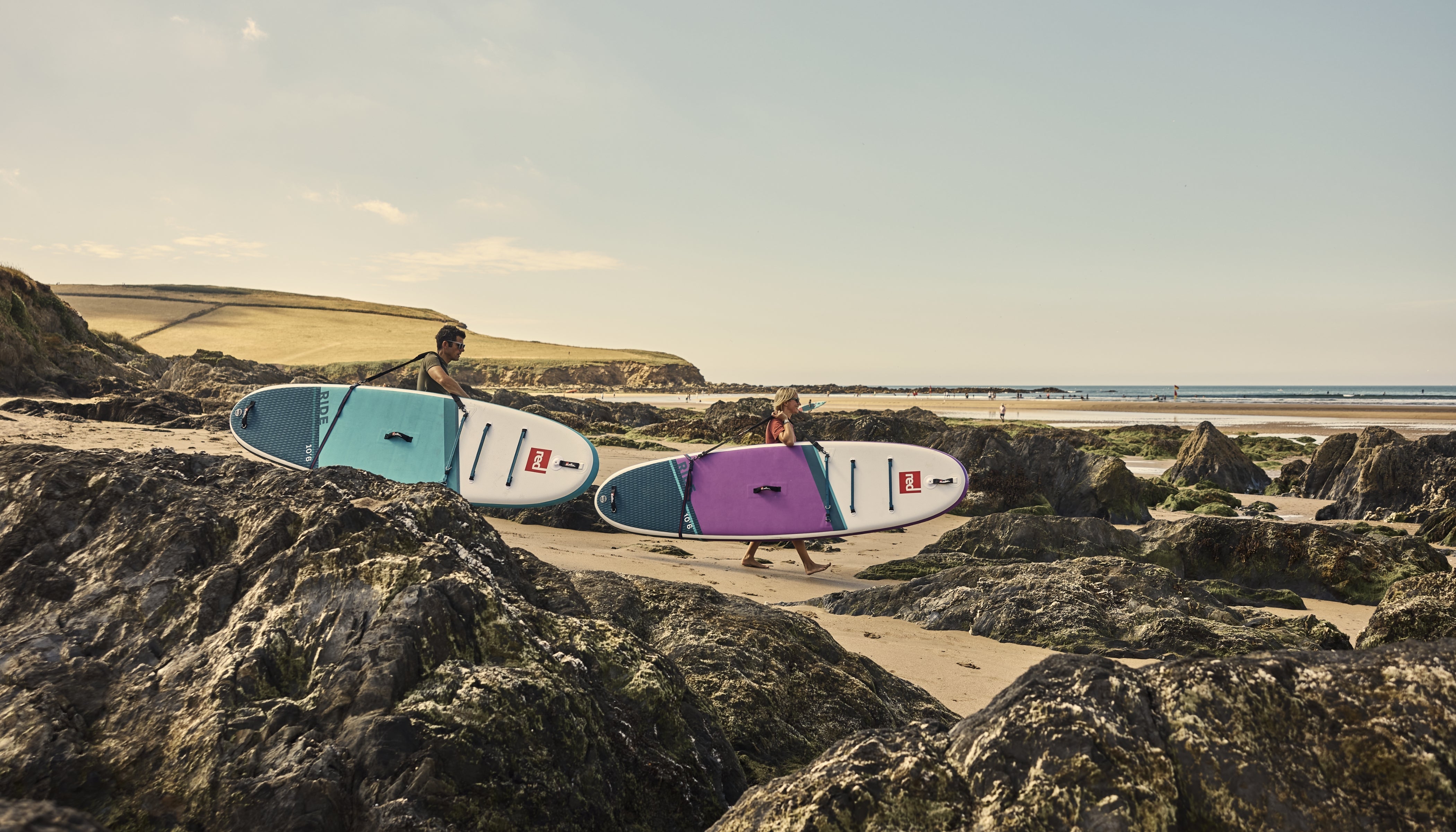The world of Stand Up Paddleboarding was transformed by the evolution of the inflatable paddle board. Until that time, the sport had predominantly been the preserve of big wave riders who used hardboards as a means of propelling themselves on to waves. These hard boards used existing manufacturing processes from other sports such as surfing, windsurfing and kayaking and used a variety of constructions, mostly based around a foam core encased by laminates of fibre glass, carbon or even thin laminates of wood.
Whilst these boards proved effective for use in the waves as well as for racing, the inherent fragility and cumbersome nature made them impractical for the vast majority of would-be paddlers. And whilst these hardboards still have a place in the elite/professional side of SUP for paddlers looking for marginal differences in racing or waves, the performance margin has been reduced to almost nothing by innovations, materials and superior design at the premium end of the inflatable paddleboard market.


THE EXPANDING INFLATABLE MARKET
If you’re reading this guide, the chances are you’re either looking to buy your first board or upgrading from an existing board.
Well, you’ve come to the right place! The purpose of this guide is to explore the ever-increasing, although potentially confusing, world of inflatable paddle boards, debunk some myths and give you a clear understanding of the technology involved in the manufacture of these boards.

DESIGNING THE BEST INFLATABLE PADDLE BOARD
Put simply, the big differences in price across the market today are due in large part to the construction processes and materials used in the creation of a board. And these differences are not purely for reasons of performance. The quality and durability of construction are, of course, vital when you consider the importance of safety of the paddler when out on the water. So what are these differences?

DROP STITCH PADDLE BOARDS
Early days of inflatable boards, a material was adopted that has since become known as “Drop Stitch”. Essentially, this refers to the material which forms the top and bottom skin of the board which is connected by threads. This gives the board it’s shape, structure and stiffness.
Drop stitch comes in various forms and, generally speaking, cheaper boards (although also some so-called “premium” boards) use this to create something known as a ‘single layer’ or ‘fusion’ board. These have a very thin PVC coating which is similar thickness to a deflated balloon, and which is spread over the woven drop stitch material to make it airtight. The resulting board is often bendy, unreliable and does not deliver a very good paddling performance. A good tell-tale sign of whether a board is made using this, is if the board has a maximum PSI of 15psi or less displayed on it. This is not because it works brilliantly at that pressure, but because they aren’t designed to last under pressure. Inflate it to more than that and you’re going to have problems down the line. As a guide, a minimum of 15psi should be used to give good performance but ideally your board should be able to be pumped to 18-22psi to deliver unbeatable performance.
An evolution of these “single” layer construction came in the form of “double layer” drop stitch. This involved the doubling up (surprise!) of the PVC layer to reinforce the board and make it stiffer. Whilst it did achieve this, it came at the expense of weight as inevitably these boards were heavier and they were also more susceptible to cosmetic blemishes. Certain manufacturers sometimes try to avoid such blemishes by adding strips (sometimes called stringers) around the edge of the board, rather than double coating the whole board.
Whether the board is single or double layered, fundamentally the drop stitch material fails to provide a level of stiffness and quality required to produce an inflatable paddle board that will give you an authentic and enjoyable paddling experience. Such boards are essentially little more than beach “toys” and this is reflected in their price. However, whilst cheap to buy, the lack of durability ultimately means your investment is possibly going to be wasted. Repairing these boards when they fail can be both uneconomical and potentially dangerous if the structure of the board has been compromised.


MSL Construction


PADDLEBOARD CONSTRUCTION
We call this process TEC AIR and it means we constantly scrutinise every part of the production process to maximise board reliability and performance. Whether it’s how the rocker curve is applied or the process used to bond the layers together, we’ve continually evolved the process to ensure our boards deliver unrivalled quality.
TYPES OF INFLATABLE PADDLE BOARD
So the material and construction of an inflatable paddle board is vital in terms of its quality, durability, stiffness and performance. Now let’s take a look at the different types of board available on the market today:






